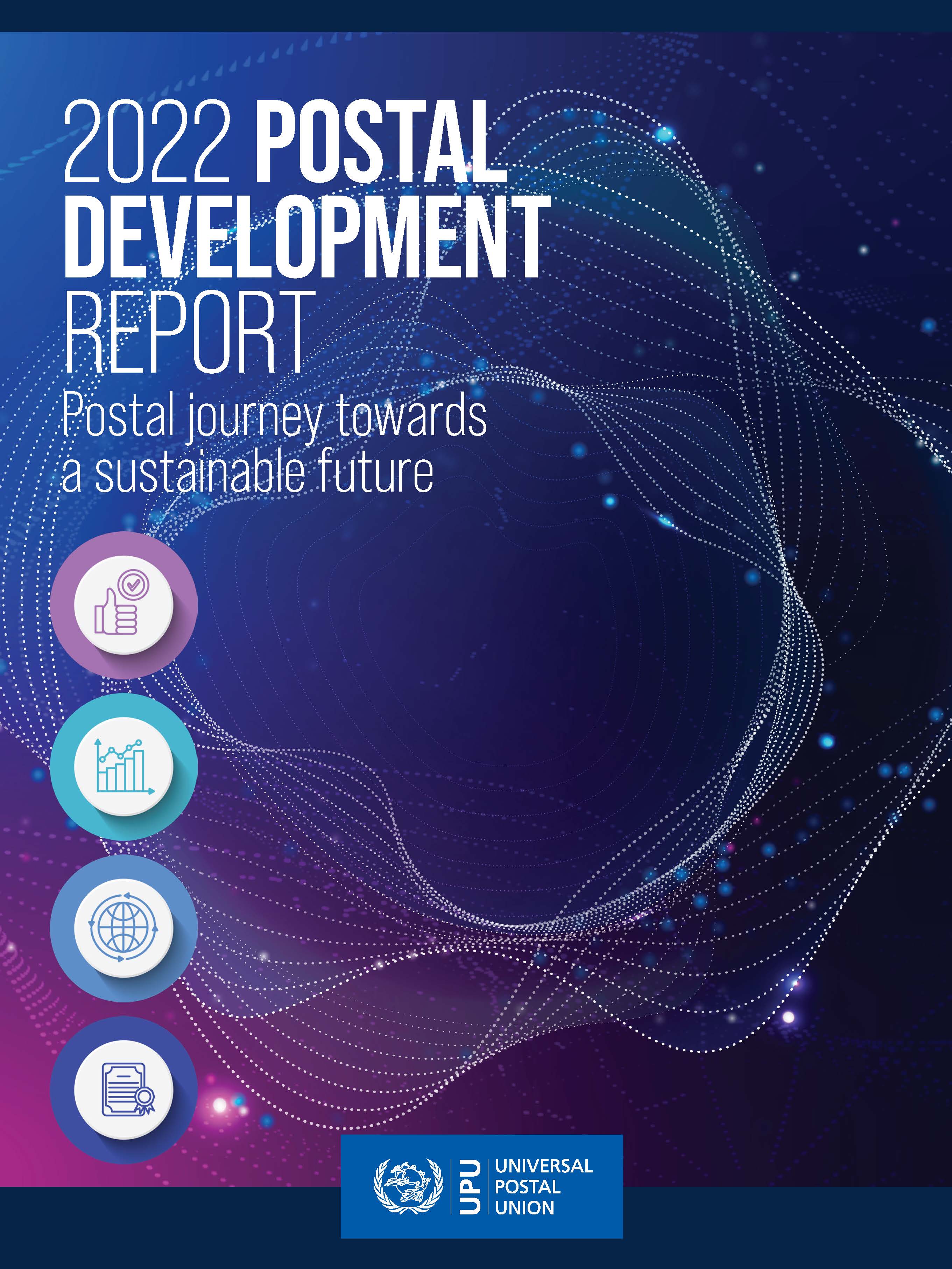Postal Development report 2022
The 2022 Integrated Index for Postal Development (2IPD) provides the most comprehensive view on current global postal development.
Relying on a unique combination of postal big data and statistics made available by 172 countries, it paints a picture of an asymmetric state of postal development across the world.
Based on the analysis of 2IPD scores, we have peer grouped and
categorized countries into 10 postal devel-opment levels. A clustering
analysis reveals that a relatively large number of countries are
classified in low or lower-middle postal development groups,
highlighting significant postal service development gaps between
nations.

UPU Postal Development Report 2022 highlights positive post-COVID Recovery
The Universal Postal Union, the UN specialized agency for international postal cooperation, has just released new research demonstrating that the quality of postal services worldwide has improved since the height of the COVID-19 pandemic.
“I congratulate the postal sector for its resilience in overcoming the global challenges of the COVID-19 pandemic and I urge it to keep this momentum of progress and growth in the years to come. The Postal Development Report reminds us that the global postal network is only as strong as its weakest link. The UPU remains at the ready to provide member countries with the tools, knowledge and services needed to ensure each and every link in our network grows stronger each year,” said UPU Director General Masahiko Metoki.Using postal big data and statistics from 172 countries, UPU’s Postal Development Report 2022 features a comparative index providing a comprehensive overview of global postal development across four dimensions: reliability, reach, relevance and resilience of postal services.
The index is a next generation tool for the UPU and its member countries as they strive to ensure universal access to high-quality, modern services – including logistics for e-commerce – via the Post.
For the first time, the report proposes 10 postal development levels. Austria, China, France, Germany, Japan and Switzerland’s postal networks have all reached the top tier – achieving postal excellence. A majority of countries have started making progress, demonstrating a global strengthening of the sector.
This positive news is bolstered by data showing that the decline in domestic letter-post volumes has slowed for the first time in a decade. According to the research, postal operators also showed signs of taking advantage of growing opportunities in the parcels and logistics market – today’s lion’s share of the postal business.
The 2022 edition of the report also noted several countries have made significant strides. This includes Armenia, Egypt and Estonia, which achieved the highest score progressions compared to the previous year. Cameroon, Colombia and Saudi Arabia were recognized as regional leaders in the 2022 index.
Despite demonstrating the collective progress of the sector, the index also highlighted that countries’ postal development still remains skewed towards the lower development tiers – particularly in terms of reach and relevance indicators. In order to keep up with global cross-border e-commerce needs and contribute to the overall development of delivery markets, postal operators will need to improve their overall connectivity and strengthen their business models.
The report also makes connections between reductions in the postal carbon footprint and successful postal development, highlighting how the index’s components can provide insights for the preparation of mitigation plans to avoid negative environmental impacts of postal activities.
Read the full report here.
